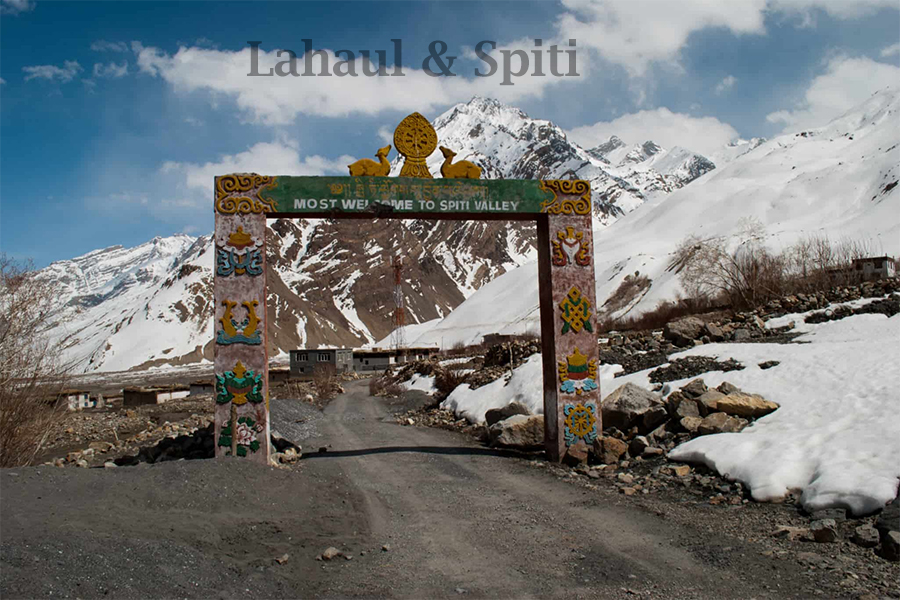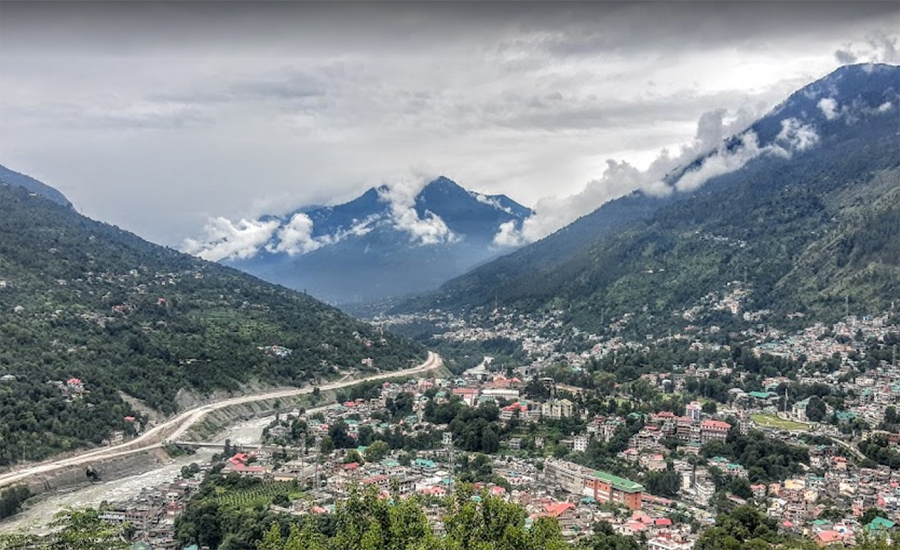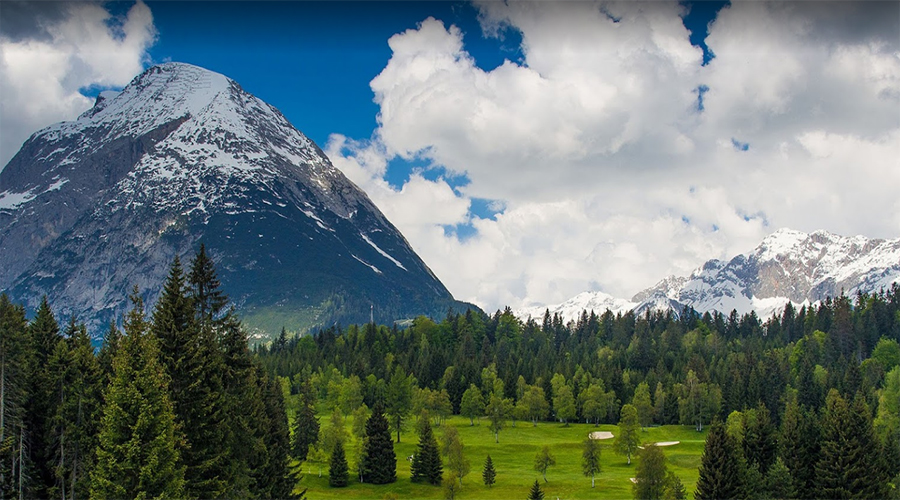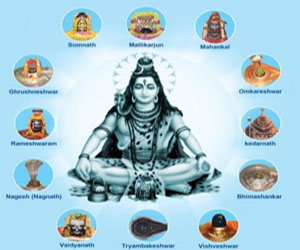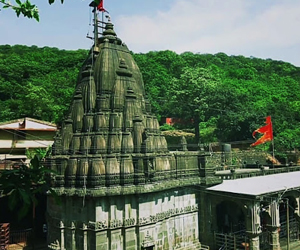Places to Visit in Lahaul & Spiti
Lahaul and Spiti are rugged and mountainous regions in Himachal Pradesh. These are two valleys that are incredibly beautiful and scenic. Snow is the one thing that you can see here everywhere. It does not rain here in Lahaul and Spiti. The high Himalayan mountains and rivers flowing through valleys lend it a surreal landscape that cannot be described in words.
There are many Tibetan monasteries here which are also famous tourist attractions. The high mountain passes like Rohtang La and Kunzum La are the best trekking places in Himachal Pradesh. Our Himachal Pradesh tour packages are best for visiting places in Lahaul and Spiti. You will love Lahaul and Spiti if you love going on adventure trips. Our Himachal Trekking Packages also feature quite a few places in Lahaul and Spiti. To get you familiar with all the best places to visit in Lahaul & Spiti.
1. Key Monastery
One of the oldest monasteries in Spiti valley is the Key Monastery. It is estimated that Key Monastery is more than 1000 years old. Key Monastery is near Spiti River. Dromton, who was a student of the great Tibetan teacher Atisha, built this monastery in the 11th century. The structure of this monastery was rebuilt over and over again. Its hilltop position makes it look like a fortress from a distance. But the remarkable architecture is an example of the supreme building skills of Tibetan monks and artisans. The walls of this monastery are adorned with various murals and colorful paintings. Key Monastery is also a religious center where monks receive education and training in Tibetan arts and spiritual leadership.
2. Chandratal Lake
Chandratal Lake is named because of its crescent shape. It is one of the most scenic lakes in Spiti. The lake has a mythological legend according to which Lord Indra picked up the Pandava prince Yudhisthira in his chariot. Chandratal Lake Trek is one of the best treks in Himachal Pradesh. The trail goes through high mountain passes, alpine meadows, Himalayan landscapes, and barren mountains. Trekkers love to camp beside the lake. A strange thing about Chandratal Lake is that its colors seem to change at different times of the day. Chandratal Lake is a Ramsar site and ranks among the world-famous high-altitude wetlands.
3. Kunzum Pass
Kunzum Pass is one of the best places to visit in Lahaul and Spiti. It is one of the highest mountain passes in India and it is also among the highest motorable passes. Kunzum Pass is a great destination for trekking. Kunzum Pass trek goes through some of the most scenic regions of Lahaul and Spiti. It offers panoramic views of icy peaks of the Chandrabhaga range, Bara- Shigri Glacier, and Spiti Valley. The trek route to Chandratal Lake passes through Kunzum Pass and it is a 15 km trek. Trekkers follow a ritual to do a full circle of the temple of Kunzum Devi in their vehicle.
4. Pin Valley National Park
Pin Valley National Park is situated in the cold desert of Lahaul and Spiti. It is one of the best places to spot the Snow Leopard, Himalayan Ibex, Brown Bear, Red Fox, and several other Himalayan species. You can spot birds like Golden Eagle, Griffon, Bearded Vulture, and Snow Cock, which are found only in the higher elevations in Lahaul and Spiti Valley. Trekking to Pin Valley National Park is done both in summer and in the winter season. The trek goes through such scenic places as Manali, Rohtang Pass, Kunzum Pass, etc. You will have to take permission from authorities to trek through Pin Valley National Park.
5. Suraj Tal Lake
Suraj Tal Lake falls on the Manali Leh route, this is one of the most beautiful lakes in Lahaul and Spiti. The name of this lake comes from ‘Suraj’ who is the sun god of Hindu mythology. Suraj Tal Lake is at a high elevation and is the third largest lake in India. The lake is near Baralacha Pass and is so beautiful that it is the favorite lake of photographers. Suraj Tal trek is considered to be one of the most adventurous treks in Lahaul and Spiti. Taking a dip in Suraj Tal is considered to very holy thing to do, and it purifies devotees from all sins. Bikers and trekkers love this lake as it is on the Manali Leh route. Trekkers can view the scenic confluence of Chandra and Bhaga rivers, Zanskar mountain range, nomadic hamlets, rocky mountain terrain, steep mountain passes, and gorges on their way.
6. Dhankar Monastery
Dhankar Monastery is one of the top sightseeing places in Lahaul and Spiti Valley. It is on the edge of a mountain cliff, and it is considered to be one of the top 100 endangered monuments worldwide. Dhankar Monastery was built over 1000 years back on the top of a mountain and it was built in such a way that it gave scenic views of the Spiti and Pin rivers which met near the monastery. Dhankar Monastery is a center of Buddhist philosophy and teachings. The museum here has a rare collection of murals, paintings, manuscripts, stone sculptures, and other antiques. The statue of Dhyan Buddha is the main attraction in this monastery.
7. Tabo Monastery
Tabo Monastery is not only one of the oldest Buddhist monasteries in Lahaul and Spiti but also India’s oldest monastery. It is located at a great height and it offers great views of Spiti Valley. Tabo Monastery is one of the most important Buddhist monasteries in the whole of India. There is a rare collection of Thanka paintings, murals, fresco paintings, and Tibetan sculptures inside the monastery. It has a school named Serkong School which teaches around 300 students in various subjects like English, Hindi, Maths, Bhoti, General Knowledge, etc. The morning time in this monastery is a time when lamas meditate, monks chant prayers, and there is pristine peace in this monastery.
8. Dhankar Lake
Dhankar Lake is in the Spiti Valley in Himachal Pradesh. This lake is very close to Dhankar Monastery. The calm waters of this lake reflect the changing colors of the sky and the surrounding mountains. Mythological legends associated with this lake tell of how Lord Shiva blessed this lake to be full of water all the time. Dhankar Lake is a very scenic lake where you can come and see the wonderful natural beauty of Lahaul and Spiti Valleys.
9. Kibber
Kibber is a small village that is blessed with immense natural beauty. It is in Spiti Valley and the barren mountain cliffs, cold desert landscapes, and towering mountains lend it a surreal beauty. Kibber Wildlife Sanctuary is one of the best sightseeing places in Kibber. Kibber is also one of the highest inhabited villages in India. There are only 366 residents who live in this village. The Tibetan architecture of the houses here is remarkable. The local monasteries here are a must-visit. Serkong Rinpoche, who was the spiritual master of the Dalai Lama built the Kibber Monastery. He also died in this village. There are many small villages nearby that are best to experience the Tibetan lifestyle and Buddhist culture of this region.
10. Baralacha La
The Baralacha La is a high mountain pass in Zanskar Valley and is one of the best places to visit on your trip to Lahaul and Spiti. Baralacha La is an 8 km long mountain pass that connects the Lahaul region and the Ladakh region. Baralacha La is surrounded by the natural beauty of flowing rivers, huge mountains, valleys, and cold desert terrain. In the wintertime, the Baralacha La trek is also one of the best treks in Himachal Pradesh. The trek to Chandratal Lake from Baralacha La is the most amazing in Lahaul and Spiti. You can view the gently flowing Bhaga River which flows from Suraj Tal Lake. Baralacha La is also a place to spot rare Himalayan birds like the Bearded Vulture, Snow Pigeons, and Horned Lark. You can even spot animals like Himalayan marmots, Pika and others.
11. Triloknath Temple
Triloknath Temple is one of the famous temples in the Lahaul and Spiti region. According to some, the temple was originally a Buddhist monastery. Triloknath Temple is a temple of Lord Shiva and the name comes from one of the names of Lord Shiva which is Triloknath, meaning ‘Lord of the Three Worlds’. Triloknath Temple is considered to be a very holy temple after Mount Kailash and Mansarovar Lake in Tibet. This is a rare temple where both Hindus and Buddhists worship. Hindus worship Lord Shiva and Buddhists worship Arya Avalokiteshvara. The temple is also called Tunda Vihar. The Buddhist prayer flags sway with the winds and the small bells create a very peaceful atmosphere.
12. Shashur Monastery
Shashur Monastery is one of the finest monasteries in Lahaul and Spiti. The monastery was built in the 17th century. The interiors and architecture of this monastery are based on the Mandala concept where a square has four gates and there is a circle at the center. There are magnificent paintings and Tibetan sculptures in this monastery. The name of this monastery comes from the blue pines which grow around this monastery. The best time to visit Shashur Monastery is in July at the time of the Chham dance festival. Monks wear Tibetan masks and dance to the beat of drums, and clash of gongs and cymbals.
13. Gandhola Monastery
Gandhola Monastery is built on a small hill near the confluence of the Chandra and Bhaga Rivers. It is also famous as Guru Gantal Gompa. This monastery is around 800 years old and is the oldest Buddhist monastery in the Lahaul region. Padmasambhava founded this monastery. Gandhola Monastery has wooden idols of Buddha and black stone sculptures of various Buddhist deities. The wooden idols stand apart from the clay idols of Buddha found in many monasteries. There are murals, paintings, manuscripts, and Tibetan scrolls that date back to the 2nd century B.C. The Buddhist prayer flags fluttering in the winds and the tranquil environs that surround this monastery lend a calm and serene aura to this place.
14. Tayul Monastery
Tayul Monastery is also known as the Tayul Gompa. This monastery is in Spiti Valley and has a 12 ft tall idol of Padmasambhava. The statue shows Padmasambhava in his two forms of Vajravarahi and Singhmukha. Tayul Monastery has 108 prayer wheels that rotate on their own without any external force. Tayul Monastery is one of the oldest monasteries in Lahaul and Spiti, and it was built around the 17th century. The monastery has Buddhist scriptures and Thangka paintings, showing the various scenes from Buddha’s life.
15. Tangyud Monastery
Tangyud Monastery is believed to be built in the 14th century and this monastery is in Spiti Valley in Himachal Pradesh. This monastery has a structure that is similar to a Chinese fortified castle. This monastery is located at the edge of a deep canyon near Kaza. The monastery is home to followers of the Sakya sect of Tibetan Buddhism. Tangyud Monastery is renowned as the highest altitude gompas in all of India. Kibber Wildlife Sanctuary is close to this gompa. The monastery is also a training center where Buddhist monks are trained in Buddhist scriptures.
16. Kardang Monastery
Kardang Monastery or Kardang Gompa is 900 years old Buddhist monastery in the Lahaul region of Himachal Pradesh. The monastery is built on a hill overlooking the Bhaga river. The Kardang Monastery has a rare collection of thangka paintings, murals, Buddhist scriptures, frescoes, old weapons, and musical instruments. There are sculptures of Buddhist deities like Padmasambhava, Tara Devi, Tagden Shakyashree, and others. The prayer halls are adorned with colorful paintings and the ceiling has fresco paintings relating to Buddhist mythology. The library has rare books and manuscripts on Buddhist scriptures and subjects like tantra, mantras, etc. The monks of this monastery perform the Chaam dance during June and July every year.
17. Kaza
Kaza is a small town in Spiti Valley, Himachal Pradesh which is blessed with stunning natural beauty. It is a picturesque town with innumerable Buddhist gompas, snow-covered mountains, valleys, and river streams. Kaza is a perfect place for going on treks to Pin-Bhaba, Pin Parvati, and Parang La. There are so many different Buddhist temples and shrines here that lend spirituality to this place. You can take nature walks in Kaza and explore small villages and their unique lifestyle. You can visit Kaza from Kinnaur Valley and also from Lahaul Valley. But Lahaul Valley is closed during winters as it is covered with thick snow.
18. Giu Mummy
Giu is a village in Spiti Valley and is famous for its mummy of a Tibetan monk. The mummy is placed in a glass case, and it is on a small hill outside the village. Carbon dating has proved the mummy to be around 500 years old. The strange thing about this mummy is that it has not decayed even after so many centuries and is still preserved without any chemicals. Giu Mummy is dressed in silk robes and was discovered in 1975.
19. Sarchu
Sarchu has the typical landscape of barren hills, rugged terrain, and a cold desert atmosphere. It is located on the Himachal Pradesh and Ladakh border. It falls on the Manali Leh Highway and is a major camping place for tourists who are visiting Leh Ladakh region. Sarchu is also known as Sir Bhum Chun. It is a camping site where many camps are pitched for travelers. Sarchu is like a resting place, which is used for centuries by local nomads, villagers, mountain tribes, adventure lovers, and early traders. Sarchu is also a base point for treks to the Zanskar region.
20. World’s Highest Post Office, Hikkim
World’s Highest Post Office is a unique and interesting place to visit in Lahaul and Spiti Valley, Himachal Pradesh. The postman in this post office travels on foot to deliver posts to people staying in Lahaul and Spiti Valley. He travels 46 km almost every day to deliver the post. For tourists, visiting the World’s Highest Post Office in Hikkim village is like doing a unique thing. The postman of this post office has to traverse through snow-covered mountains, rugged and rocky terrain, and mountain valleys almost daily.
21. Kungri Monastery
Kungri Monastery is in Spiti Valley and this is the only monastery that follows one of the oldest schools of Nyingmapa Buddhism. The interiors of Kungri Monastery have silk paintings of Buddhist gods and goddesses on its walls. Kungri Monastery is believed to have been built in the 14th century. There are statues and idols of Buddhist deities and a collection of over 300 Tibetan books on scriptures and Buddhist teachings. During July, the monastery is decorated to celebrate the life of Padmasambhava, the famous Tibetan teacher.
22. Tabo Caves
Tabo Caves are more than the 1000-year-old caves that are located above Tabo Monastery. These caves are still used by Tibetan monks for meditation and are a refuge for them in times of harsh winters. Tabo Caves are on high cliffs that overlook Spiti Valley. Buddhist monks who wanted to meditate in a secluded place created the caves. The roof of these caves has a hole to let out smoke from fires that were lit to protect the monks from biting cold. Some caves have narrow entrances that lead to small chambers inside, which are interconnected with each other. Today, these caves are an amazing sight for tourists who want to visit Lahaul and Spiti.
23. Komik
Komik is a small village near Kaza which is also the highest village that is connected with a motorable road. It is full of scenic landscapes. You will find treks and trails that are full of high cliffs, steep gorges, rocky mountain paths, and rugged terrain. But the adventure in these treks is a joy in itself. You will find shepherds herding their yaks and drinking the local tea that is made from yak milk. Komik has cheap accommodation and the simple life of the herders and villagers can amaze you with its simplicity.
24. Sopona Lake
Sopona Lake is one of the pristine blue lakes in Spiti Valley in Himachal Pradesh. The lake is formed due to melting glaciers and trekking to this lake is one of the thrilling activities you can do in Lahaul and Spiti. You can trek up to Manirang Pass and have gorgeous views of Dhangkar Valley and Himalayan ranges. The trek lasts 3 to 4 hours and can offer scenic views at all times.
25. Langza Village
Langza Village is in Spiti Valley and is famous for its handcrafted shawls, carpets, vessels, and other handicraft items. The village has Buddhist monasteries, prehistoric structures, green pastures, and small houses. There is an ancient temple from where you can view the peaks of Chau Chau Kang Nilda and other mountains. Langza Village is a remote village with only a population of 137 residents.
26. Tashigang Village
Tashigang is a small village where only 40 residents live. It is on the Indo-China border and is a very picturesque village in Spiti Valley. Due to its elevated position, Tashigang Village commands unforgettable views of Spiti Valley and the Sutlej River. You can rent a house for a day and interact with the local villagers. Or, take a village walk and experience the rugged lifestyle of this region. Some houses are converted into guest houses. You will find some Tibetan tea shops where you can taste some local delicacies. You can also go on a horseback ride and see the vast landscapes of Lahaul and Spiti.
27. Spiti River
Spiti River is the lifeline of Lahaul and Spiti Valleys. There are several famous places and Buddhist monasteries which are built on the banks of the Spiti River. The famous ones are Kaza, Dhankar, Rangrik, and Tabo. Spiti River originates from the Kunzum mountains and disperses in various streams like Pin River and many others. The melting of glaciers feeds the Spiti River with fresh waters and not through rainwater as rains are very scanty in this region. Some sections of Spiti River are very scenic such as the section between Kaza and Rangrik, which can be seen from Key Monastery.

